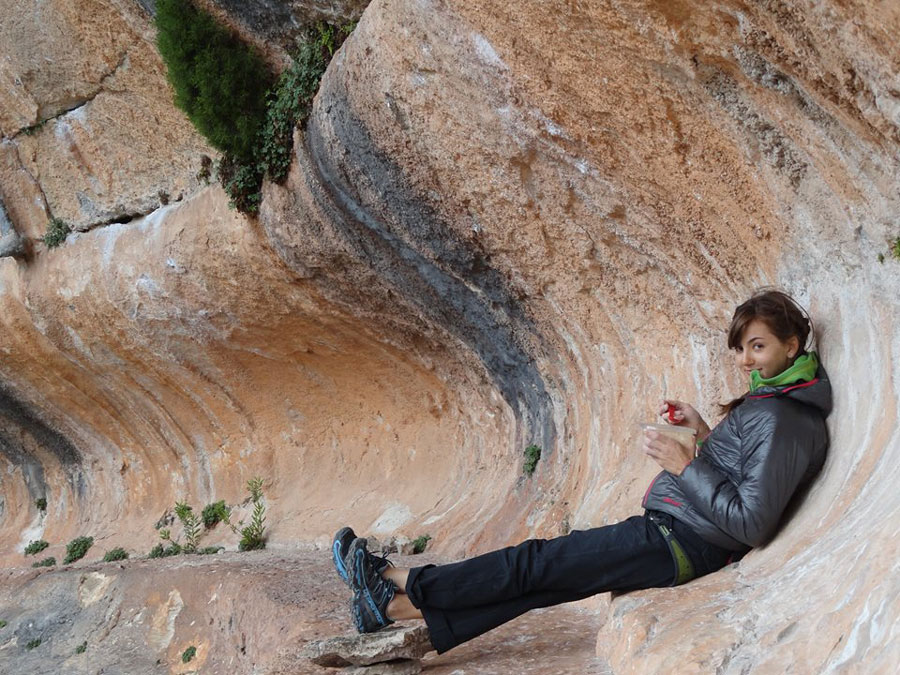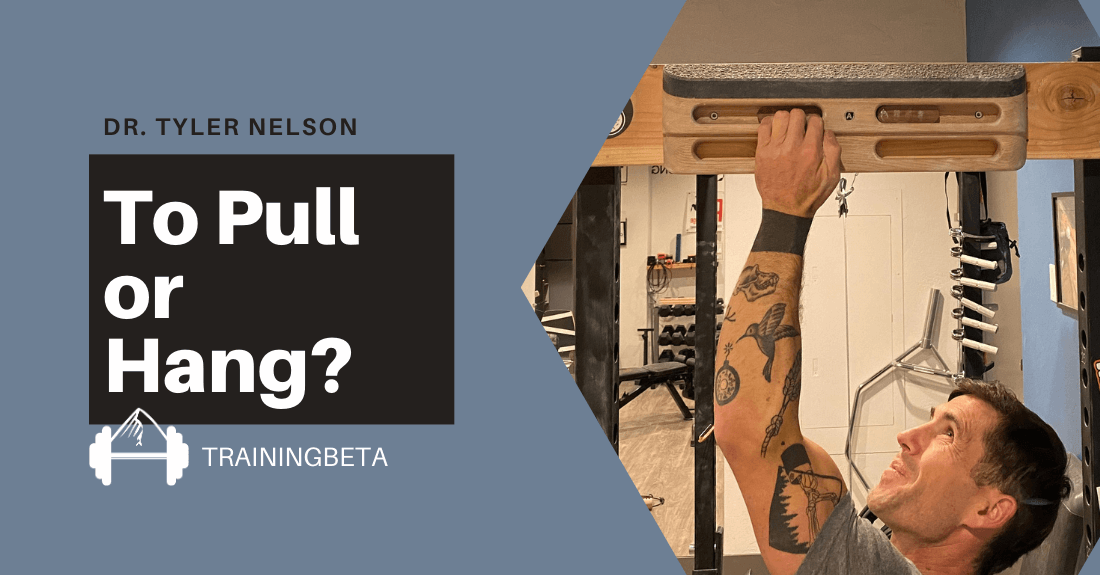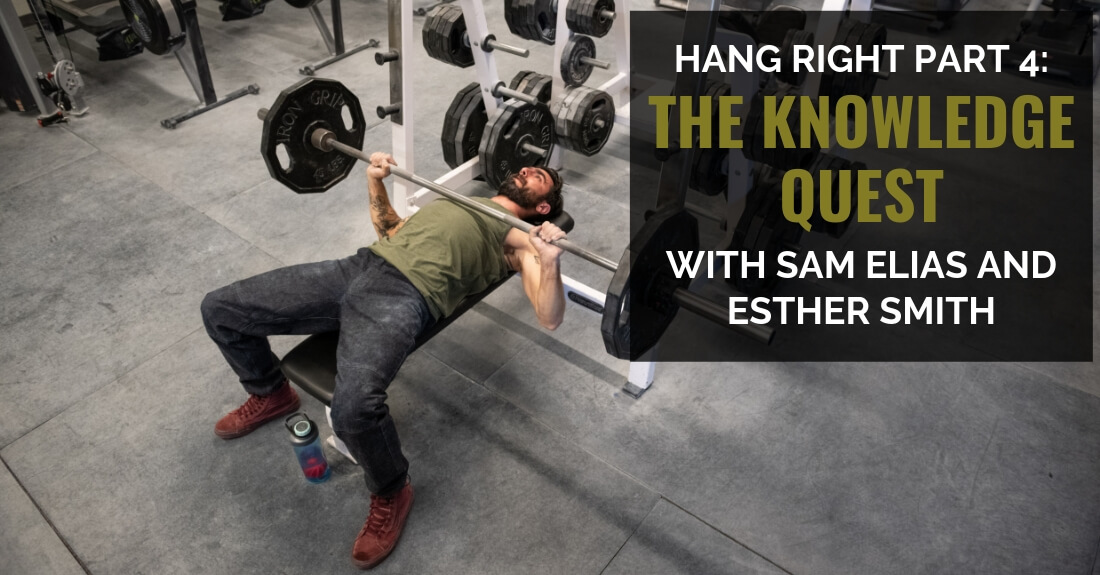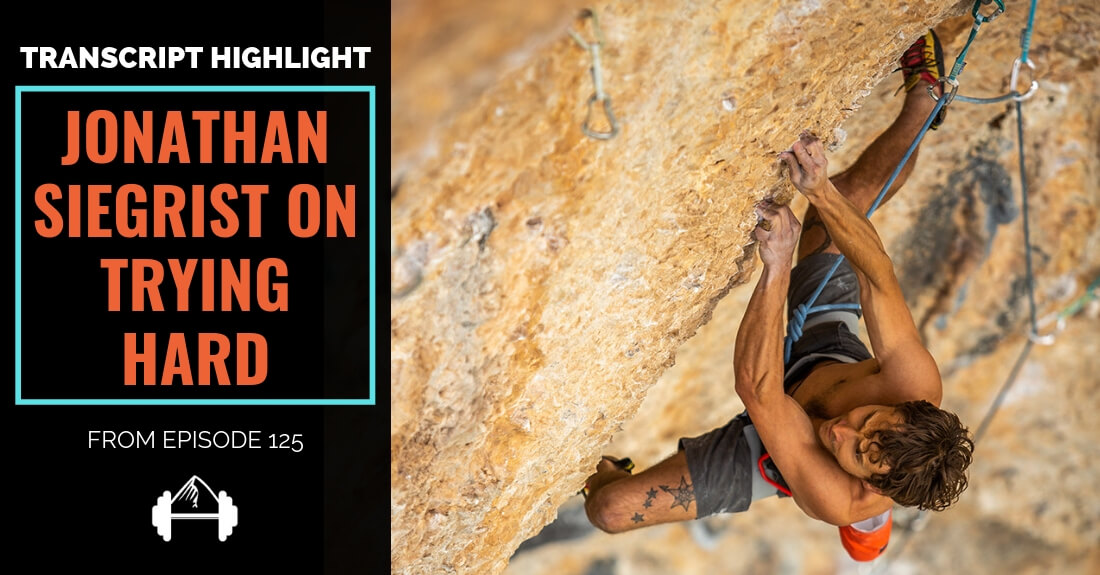This post is by Paige Claassen, who is one of my closest, dearest friends, and one of my 2 favorite climbing partners. She’s taught me a lot about what’s possible in rock climbing, and I’m so happy to have her as a guest blogger. Also, I took her advice to breathe consistently through rock climbs (see below) and guess what – it works!
And now… Paige.
Consider two scenarios.
Scenario 1: You’ve been working one project all summer, and it’s at the peak of your ability. You’ve hung at every bolt, sussed all the moves many times over, then slowly eliminated hangs. You hate falling, so would never risk a fall before you really knew the moves. After weeks of practice, you’re finally ready for a redpoint burn on lead. You smoothly and confidently climb up to the crux. You’re about to execute the last difficult move, when suddenly you panic. Tunnel vision sets in and you can’t find that precise foot placement you’ve practiced so many times. Your elbows bow out and all points of contact begin to shake. This isn’t how a send burn should feel. “TAKE!”
Scenario 2: You gave an onsight burn on a route you know is at the peak of your redpoint ability a few days ago. You knew an onsight was unlikely, but you wanted to see how far you could get if you tried your hardest. Since then, you’ve linked long sections of the route by pushing yourself and taking lots of falls. You’ve skipped bolts and taken huge whips. When the time comes to redpoint, you’re not afraid. You climb up to the crux, take a deep breath, and give control over to your muscles. You’re shaking, and your elbows come out from the wall but you grit your teeth and try your hardest. With a final grunt of effort, you stick the final crux and climb to the anchors. SEND!
We all want to be the heroic climber in the second scenario.
They may not have eased up the route gracefully, but they gave it their all and came out on top. We always imagine our send burn to feel so perfect. If only we grab that pinch in just the right spot, and if only the hip rotation feels easy, then we’ll have enough energy to do the last hard move. This would be great, but it’s not reality. The whole point of a project is that we’re trying something at or even beyond our abilities. This means we have to put 100% of our effort into the route. It won’t feel easy because, well, it’s not the warmup.
But how do we overcome that devil in our head that tells us “this doesn’t feel right, you should probably give up and wait until you can execute perfectly” or “if you fall you’ll get hurt” or “if you stick this move, that means you’ll have to go for the next move, and then you’ll be even more run out!” Many climbers think this is a one time challenge that, once they learn to conquer, won’t bother them any longer. I can say that I’ve taken plenty of falls and completed difficult projects, yet after 13 years, I still get scared. It’s a challenge I work to overcome every single day.
Two strategies allow me to overcome my unwillingness to fall.
I would even go as far as to say these applications enabled me to climb more difficult grades. I don’t believe I’m much stronger than I was five years ago, but today I breathe and I never say take.
1. Breathe.
The most crucial part of my redpoint burns is breathing. My stomach might hurt, my muscles might feel sore, but I still have a chance if I just breathe. Everyone’s method is different. I find that if I leave the ground with a deep breath and then maintain a steady pattern of deep, consistent breaths throughout my climb, I feel my strongest. Of course, breathing provides more oxygen to your muscles, warding off the pump and aiding recovery. But on a more psychological level, breathing acts as a distraction. When I climb, all I can hear is my breath. My loud breathing pattern has become a comfort as I climb, and it distracts my mind from fear and doubt. With loud breaths, I notice if I stop breathing, and then I can consciously start up again.
Tip: Practice breathing on your warm-ups (a time when you’re not trying hard and are less concerned about performance). Tell your belayer your plan, and have them hold you accountable to breath the entire way up. If they can’t hear you, you aren’t breathing loud enough. If you’re embarrassed, ask your belayer to breath with you as you climb.
2. Never say “take.”
Whether I’m training in the gym or projecting outside, I try to make the word “take” off limits. I can easily become dependent on that useless piece of vocabulary, so I find that it’s easier to eliminate it altogether. I go until I fall. The worst case scenario is I fall and have to pull back up the rope – this is good training, because it makes me a bit more tired when I work the crux.
Tip: When training in the gym, grab a jug instead of saying take. Make your clip, recover for a moment, and then transition back to the more difficult route you were trying. This will improve your endurance and active recovery.
Another Tip: Ask your partner to hold you accountable for the no take rule. Chances are, if you verbalize your plan to not hang on the rope, you won’t even say the word to begin with.
I hope this process helps you as much as it helps me. Remember that, even though these strategies seem simple (I mean c’mon, breathing!?), they are actually quite difficult to practice. Warmups are a great time to rehearse new techniques. Slowly, the technique will become less effortful, more habitual and will soon carry over to your more difficult projects. Be patient with yourself and remember your mother’s old saying, “Practice makes perfect!”
Paige Claassen, Pro Climber
 Paige Claassen has been climbing for 14 years, since the ripe age of 9 when her parents took her to the local Estes Park climbing gym. She spent the first 8 years of her career solely in the gym, competing throughout the world in world cups and world championships.
Paige Claassen has been climbing for 14 years, since the ripe age of 9 when her parents took her to the local Estes Park climbing gym. She spent the first 8 years of her career solely in the gym, competing throughout the world in world cups and world championships.
Over the past five years, Paige has transitioned to climbing outside, where she now spends her time projecting lines she finds beautiful, inspiring, and preferably slightly overhung. Her proudest accomplishments include Grand Ol Opry (5.14b) and To Bolt or Not to Be (5.14a).
From June of 2013 through March of 2014, Paige will be traveling around the world and climbing to raise money for non profits supporting women and children. You can follow and support her adventure, called Lead Now, on her blog.








So inspiring!
This is a great article! I often forget to breathe when I climb (doh!) – so I’m definitely going to try the breathing as you start idea.
Thank you!